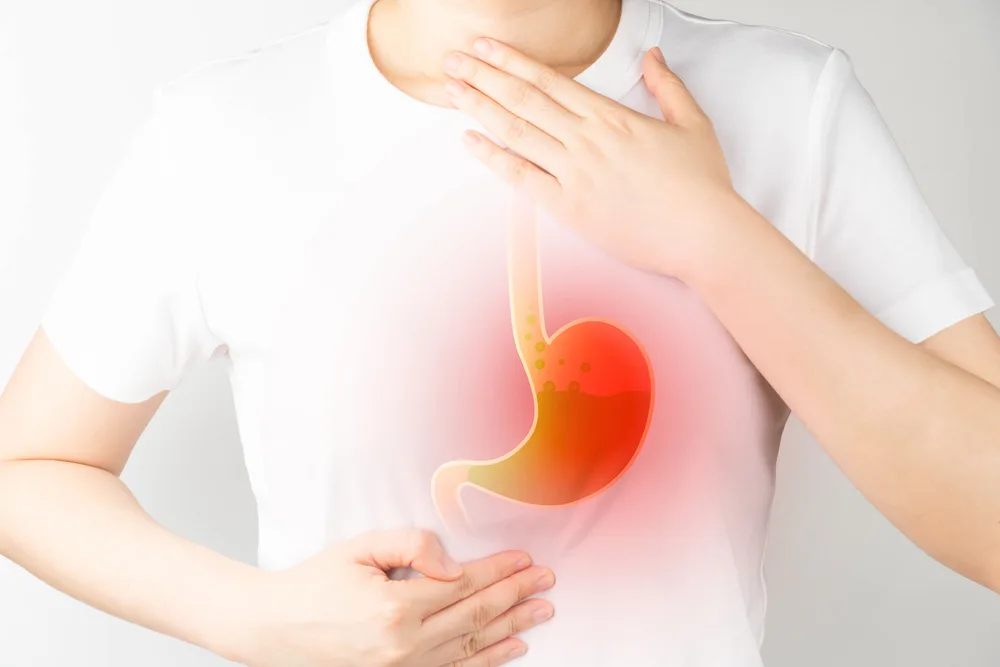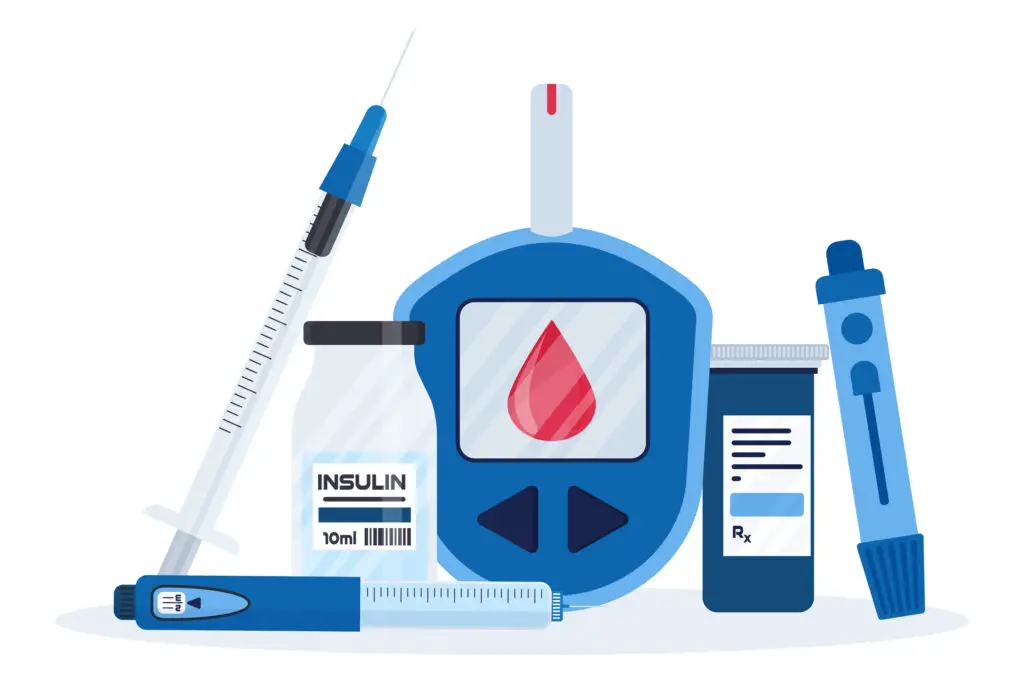Table of Contents
There can be challenges to face when starting out the keto diet. One of them is keto flu. Keto flu is a term to describe flu-like symptoms that some experience when undergoing a ketogenic diet. The symptoms include fatigue, headache, brain fog, muscle soreness, and more. Find out more about keto flu, and how to prevent and overcome it in our specially curated guide.
What is keto flu?
Keto flu, short for ketogenic flu, is a range of symptoms commonly experienced when starting a ketogenic diet. It occurs within a few days or weeks of adopting the diet (1). The symptoms usually ease up after about a week as the body starts burning fat (2).
Keto flu isn’t caused by a virus or an infection. It’s a natural process as the body adapts to the metabolic changes brought by the ketogenic diet. In this diet, fat is used as the main energy source instead of sugar (3). Keto flu may appear as the body adjusts to this transition.
The severity of the symptoms can vary among individuals. It depends on some factors, such as gender, overall health, and metabolic flexibility.
Why does keto flu happen?
Keto flu can occur due to several factors. Those factors happen during the adaptation phase of a ketogenic diet. Understanding them can help individuals prepare better and manage keto flu symptoms in their dietary transition.
Carbohydrate withdrawal
One of the main reasons behind keto flu is carbohydrate withdrawal. When following a ketogenic diet, carbohydrates are drastically reduced.
Gut microbiome changes
Another potential contributor to keto flu is the changes in the gut microbiome. The gut microbiota plays a role in bodily functions, including digestion and the immune system (4, 5). The shift in nutrient intake can affect the composition and diversity of the gut microbiota (6, 7). It potentially causes gastrointestinal discomfort.
Insufficient vitamin and mineral intake
Additionally, keto flu can be influenced by electrolyte imbalances (8). It’s sometimes linked to the low consumption of certain vitamins and minerals. Keto diets often lack vitamin A, vitamin B9, vitamin E, potassium, sodium, magnesium, and iron (9).
Electrolytes such as potassium, magnesium, and sodium maintain fluid balance, nerve function, and muscle contractions (10). But, the risk of imbalances increases when carbohydrates, which serve as sources of electrolytes, are reduced in the diet. This can lead to symptoms like muscle cramps, dizziness, and fatigue (11).
10 Keto flu symptoms
Transitioning to a restrictive low-carb diet like the keto diet is a significant change. It requires your body to adapt to this new eating pattern. This transition phase can be challenging and cause keto flu.
Keto flu can manifest with a variety of symptoms. The severity and duration might vary among individuals, commonly reported ones include (12, 13):
- Brain fog – a sense of cloudiness or difficulty concentrating or thinking clearly.
- Headache – It can range from mild to moderate intensity for several days.
- Trouble sleeping – it can be a difficulty in falling asleep or a restless sleep.
- Dizziness and fatigue – they’re the results of the body’s adjustment to a new energy source.
- Nausea – Some may experience feelings of mild nausea or an upset stomach.
- Irritability – fluctuations in blood sugar may cause irritability and mood swings (14).
- Sugar cravings – These can be intense but usually subside as the body adapts.
- Muscle soreness and muscle cramps – likely due to changes in electrolyte balance (15).
- Stomach aches – Digestive discomfort or mild abdominal pain is common
- Digestive changes – Temporary changes in bowel movements may appear, like constipation or diarrhea.
It’s important to note that not everyone will experience all of these symptoms. They are commonly experienced during the initial phase. They can persist for a few days or up to several weeks (13).
Other symptoms of the keto
In addition to the symptoms related to keto flu, there are other effects that may be experienced when following the keto diet. They arise as a result of the dietary changes involved.
Some common symptoms are bad breath, skin rash, increased urination, and thirst (12, 13, 16). These symptoms are typically temporary, and if any concerns arise, it’s advisable to seek guidance from a professional.
How long does keto flu last?
The duration of keto flu can vary from person to person. It typically lasts for about one to two weeks. However, several factors can affect the length of keto flu, which possibly prolongs it.
One of the key factors is metabolic flexibility. It determines how quickly your body adapts to using ketones for energy. Those who are more metabolically flexible may experience a shorter duration of keto flu.
Other personal characteristics and circumstances also play a role. Factors such as overall health, age, underlying health conditions, stress levels, and nutrient deficiencies impact the duration and severity of the symptoms.
How to get rid of the keto flu
Experiencing the keto flu in the early stages of the ketogenic diet isn’t uncommon. There are steps you can take to reduce its symptoms. While these tips can be helpful for some, the effectiveness may differ for others.
With that in mind, here are some general strategies that may help prevent the keto flu symptoms.
1. Drink enough water
Staying properly hydrated is crucial when following the keto diet. Adequate water intake can help combat keto flu symptoms like dizziness, fatigue, and muscle cramps (17). Hydration supports overall bodily functions, including maintaining metabolism and electrolyte balance (18).
The specific water intake needs vary depending on factors such as age, weight, activity level, and overall health. However, a general guideline is to consume at least 8 cups (64 ounces) of water per day.
To increase water intake, consider carrying a water bottle with you everywhere. Set reminders to prompt you to drink water regularly. Additionally, consuming water-rich foods, such as cucumbers or watermelon, can contribute to overall hydration levels.
2. Get enough salt and electrolytes
Sodium, potassium, and magnesium are essential electrolytes. They play crucial roles in maintaining fluid balance, nerve function, and muscle contractions (10). During the ketogenic diet, there’s a higher risk of losing these electrolytes. This is due to increased urination and reduced intake of electrolyte-rich foods like fruits (19).
To ensure you’re getting enough electrolytes, consider including foods that are naturally rich in it in your diet (20). Some of the examples are avocados, nuts, and leafy greens (21, 22, 23).
Other than that, try using appropriate amounts of salt to season your meals. Opt for mineral-rich options like sea salt or Himalayan salt. This can help add sodium levels to the body. Electrolyte beverages are also recommended, especially during the initial stages of the keto diet.
3. Eat more fiber
The ketogenic diet’s emphasis on low-carb intake can result in fiber deficiency. This is due to many high-fiber foods, such as fruits, grains, and legumes, being restricted. The general guideline for daily fiber intake is around 30-35 g per day for men and 25-32 g per day for women (24)
Increasing fiber intake is advisable to help with certain symptoms of keto flu (25). It’s important in promoting overall digestive and metabolic health (26).
There are several keto-friendly fiber sources that you can include in your diet. This includes seeds and nuts like chia seeds, flaxseeds, almonds, and walnuts (27). Avocados and non-starchy vegetables, such as broccoli, spinach, and kale, are also great sources of fiber (28).
4. Consume enough healthy and different fats
The ketogenic diet is centered around a high intake of healthy fats for energy. Getting enough healthy fats can help with certain keto-flu symptoms. It provides a sense of satiety, increases metabolism, and might support adaptation to the diet (29, 30).
It’s important to emphasize the significance of consuming a variety of healthy fat sources. This way, you can promote nutrient diversity and balance the fatty acids intake. To make sure of it, consider incorporating olive oil, coconut oil, nuts and seeds, and fatty fish into your diet (31).
Aim to prioritize whole food sources to optimize your nutrient intake and support the body’s needs.
5. Limit strenuous exercises
When starting the keto diet, the body needs time to adapt to metabolic shifts. This adjustment period varies among individuals. During this time, it may be beneficial to limit heavy exercise and avoid pushing yourself too hard.
It’s recommended to avoid intense or high-impact workouts at least in the first few weeks of starting the diet. It’s important to pay attention to any signs of fatigue, dizziness, or decreased stamina. Instead of intense exercise, you can try low-impact exercises, such as walking, yoga, and pilates.
These activities can help maintain overall fitness levels without putting extra stress on the body. As your body becomes more adapted and your energy levels stabilize, you can gradually reintroduce more intense workouts.
6. Take enough rest
In the transition phase, fatigue and low energy commonly happen. This adjustment period requires additional rest and sleep to support your overall well-being. Sleep is crucial for the body’s recovery, hormone regulation, and cognitive function (31).
To optimize your rest while on the keto diet, aim for a consistent sleep schedule and get enough sleep each night. It’s recommended for adults to have 7-9 hours of quality sleep per night (32).
You can try to improve your sleep quality by creating a relaxing bedtime routine, a sleep-friendly condition, and limiting screen time before bed. Limiting caffeine intake and engaging in regular physical activity are also suggested.
7. Take it slow when starting the diet
When adopting the keto diet, it’s important to do it gradually. It will help to minimize the potential of experiencing keto flu symptoms. Transitioning too quickly can put stress on the body. This is due to its adaptation to the significant change in macronutrient ratios.
Instead of abruptly cutting out all carbohydrates, slowly reduce your carb intake. At the same time, gradually increase your consumption of healthy fats. This allows the body to adjust more comfortably. Planning your meals and snacks ahead of time can also help make the transition easier.
You can also consider consulting with a healthcare professional. They can provide personalized guidance, address any concerns, and monitor your progress. Additionally, connecting with a support community can provide encouragement and helpful tips.
When to see a doctor?
It’s important to recognize situations where seeking medical attention is necessary while experiencing the keto flu. This is to avoid unwanted results. Here are some scenarios that warrant a visit to the doctor:
Severe symptoms
Keto flu symptoms are mostly mild. However, some can be severe enough to cause distress and heavily impact daily routines. Severe symptoms could include intense and prolonged nausea, vomiting, extreme fatigue, or severe dehydration.
Pre-existing medical conditions
As with any diet, some pre-existing medical conditions need to be consulted with a doctor before starting the diet. These include diabetes, cardiovascular disease, kidney disease, or other chronic conditions.
Consultation is also needed if you’re taking medications, especially those that affect blood sugar or blood pressure. The keto diet can impact the way medications work. It’s better to adjust and monitor your medication dosage.
Pregnancy or breastfeeding
Both pregnancy and breastfeeding require specific nutrients for the mother and baby. Therefore, it’s essential to consult before making significant changes. Doctors can provide guidance on how to modify the diet to meet the nutritional needs and ensure the health of both the mother and baby.
Unintended weight loss
Weight loss is to be expected during the keto diet. But, it’s also concerning if it occurs without explanation, is accompanied by symptoms, and is persistent. Seeking medical advice can help evaluate your situation, rule out any potential, and provide recommendations.
Will everyone experience keto flu symptoms?
No, not everyone who undergoes a keto diet will experience keto flu. The occurrence and severity depend on how well your body adapts to the diet, age, overall health, and prior dietary habits.
Does keto flu mean you are in ketosis?
No, having keto flu symptoms doesn’t automatically mean you have entered the state of ketosis. Keto flu is an indication that your body is adapting to the diet. The only way to confirm that you’re in ketosis is by measuring ketones in blood, urine, and breath.
Can anyone follow the ketogenic diet?
There are certain individuals who should avoid the keto diet. This includes people with pancreatic, liver, or gallbladder issues, pregnant or breastfeeding women, individuals with metabolic disorders, people with medication that can react negatively, and children.
Summary
When beginning the ketogenic diet, it’s common to experience keto flu. This happens due to the body adapting to using fat instead of carbohydrates for fuel. Some of the symptoms include fatigue, headaches, nausea, and more. The symptoms can be reduced by practicing a balanced diet and staying hydrated. While mild symptoms are normal, it’s important to consult if you feel severe symptoms. Seeking professional advice can ensure your well-being and provide guidance on managing any discomfort.

















Comments
0